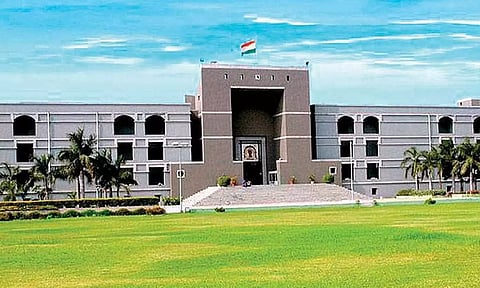

A judge of the Gujarat High Court has triggered the ire of gender justice activists by sounding off on the age of motherhood in a case relating to termination of pregnancy of a teenage rape survivor. This incident follows the frequent recent pattern of judges delving into India’s social and cultural history to make a point or two about contemporary realities that may or may not be directly relevant to the case in question. What this serves to do is to create a normative climate of social conservatism that discourages anyone from questioning received wisdom.
Hearing a petition on behalf of the 17-year-old rape survivor for a termination of pregnancy at seven months, Judge Samir Dave cited, “your mother or great grandmother” to say that in the past “14 to 16 years was the normal age for girls to get married. By the time they attain 17 years, they would deliver at least one child.” Then he went on prescribe some recommended reading to the survivor’s counsel: the Manusmriti, the supposedly foundational legal text that forms the basis for much of India’s varna and gender systems of injustice.
To be fair to Justice Dave, there is factual basis to his remarks. Indeed, in the early 1900s, before the Sharda Act was passed in 1930, the average age of marriage used to be 12.7 years, and adolescent childbirths were not rare. In modern times, they continue to be a phenomenon that worries policymakers. According to the National Family Health Survey, 7.9% of women aged 15-19 years have been pregnant or had given birth. India still has a high burden of adolescent pregnancies, with an estimated 11.8 million teenage pregnancies in 2016. Whatever the Manusmriti did prescribe to its contemporary society, teenage pregnancies cannot be considered a norm in modern times just because they occur, or because ‘girls mature earlier than boys’. They are a problem because they are associated with higher risks of maternal and child mortality, morbidity and under-nutrition, as well as lower levels of education and empowerment. A Lancet study of teenage pregnancies in India has reported that the health costs of their incidence can be “lifelong and intergenerational”.
Analysis of data on first-time mothers found that children born to teenage mothers were shorter for their age and more likely to be stunted compared with those born to adult mothers. Teenage mothers tend to be more vulnerable and disenfranchised because they are undernourished themselves, have lower agency, and are less informed about health services.
It is because of this wider context that people in positions of authority must desist from saying anything that might be construed as normalising such a phenomenon. The occurrence of a episode is no justification for it. Arguably, Justice Dave’s remarks were made in the nature of obiter dicta, remarks not essential to the formal judicial order but only providing perspective. Indeed, in the present case, the judge did order an urgent medical review of the rape survivor’s case and did say his final order would be guided by the safety of the girl and her foetus. The media too has a responsibility to supply the wider context while reporting a judge’s remarks, while resisting the temptation to sensationalise.